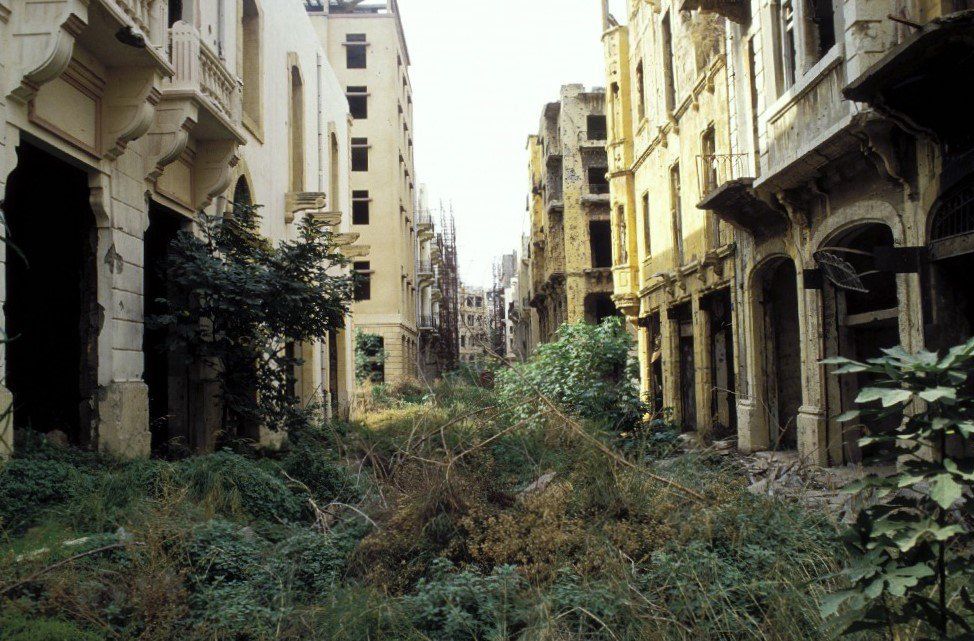
Terrible things happen in war. Many ‘innocent’ people commit not so innocent acts. Humans are constantly at war, it must be our nature. Yet we romanticize heroic military acts and certain facets of it. While war is hell: not thrill and fun, it is a game of losers. Lebanese media professional Talal Chami investigated the Hollywoodization of the Lebanese civil war (1975 – 1990) and wrote a very interesting e-book about it.
By Arthur Blok
His project was to examine war texts and visual representations of war which somehow acquire a certain potentiality to become icons of hyper-masculinity within the dissolve of Post-Vietnam American war films and the Lebanese Civil War.
Chami, himself an avid fan of heroic Hollywood movies, examined for his project literary hundreds of sources, endless piles of documents, scientific studies, books and watched numerous relevant movies. The result is a very interesting downloadable e-book - War/Film Junkies: the Hollywoodization of the Lebanese Civil War - in which he illustrates the origin and cultural background of the heroic characters in war inspired movies. Which, in reality, is all but glitter and glamour.
Chami’s research deconstructs the relationship between such war texts and Post-Vietnam American war films. He studied them as amplified visual representations of war. In this context it articulates within a contextualized Lebanese war/film reality a new perspective around film and gender studies as they overlap.
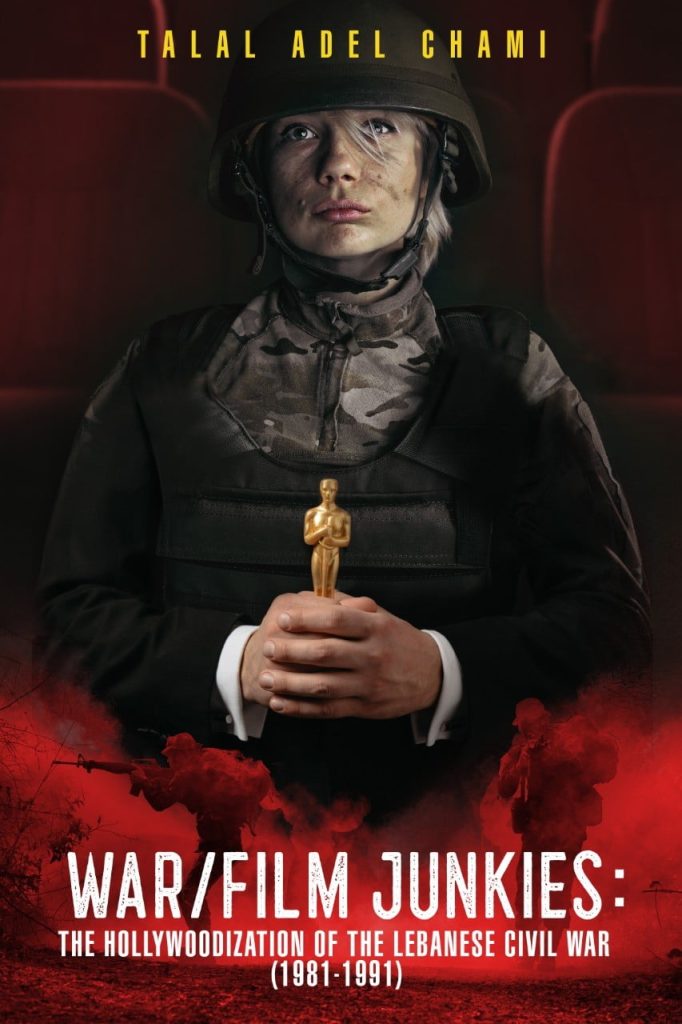
To start, his project adds interesting new knowledge on the myths and realities of the male body and gendered violence with the Lebanese Civil war. Due sensitivity of the matter an attempt rarely undertaken within the Lebanese context itself.
With varying degrees, these war texts or visual representations of war signify hard-body militiamen who transform in Lacanian processes of identification and transmogrify to become the film heroes themselves, in displays of self-aggrandizement.
These individual-physical adaptations scrutinized in the war texts, along with a sudden interruption of war activities in 1981, led to “moments” of Hollywoodization of the Lebanese Civil War. According to Chami it is not that the “total war” is being Hollywoodized, rather apparent ‘moments’ of Hollywoodization that fluctuate via these war texts at different intervals of time early on, and that the evidence clearly shows.
The myth of Phoenicia, as juxtaposed to (John) Wayne, the American Cowboy par excellence, had been re-appropriated mostly by right-wing Christians in Lebanon whose definition of the Lebanese nation relies on the necessity of believing that they are ancestrally related.
Family clan
In context: a Lebanese is first a member of his family, then his village, then his religious group, and finally he is Lebanese. Michael Johnson (2001) reveals a similar idea when he speaks of men of honor [who] fought for their family, clan, and confession.
Johnson contends in his investigation that we need not be confused by different cultural explanations for the nastiness of ethnic conflict. (Johnson 174) “[A] sense of fear, on its own, [might] provide an explanation for the general nastiness that accompanies ethnic violence.” (Johnson 178)
Militiamen around West Beirut were a spectacle not to be missed. For some reason, they adopted identifiable sub-practices of their own. Their appearance and attire were distinct, tailored for a purpose. Haugbolle claims that in the heat of battle, however, many fighters experienced elation and a sense of purpose and integration. The fighting was cathartic and everything permissible. High wartime unemployment acted as an incentive for young men to join the militias. (Makdisi et al 16)
The Cowboy’s face (Chapter II of his e-book War/Film Junkies) shows ambiguity and rebellion in his frozen act. For some reason, the image is split in three parts: the two side-parts of this image are distorted, de-focused parts of the actual image of the cowboy.
This split reflects his own identity-split: name/alias etc. It conveys the idea of haziness/fogginess that surrounds him or someone like him. His long hair hides under his hat, (possibly) and yet his white beard reflects age/maturity. You can tell he is assuming his authoritative role even for this random image. His right hand’s index finger rests on the machine gun magazine and not on the trigger. His relative facial unresponsiveness does not translate into composure.
This image communicates hyper-masculinity and power represented by this legendary militia boss of a Lebanese warring faction. What stands the most is the explicit contrast between our cowboy’s camouflage-heavy uniform that is meant to conceal him from view and the boisterous red scarf that asserts a clear bias and pleas for attention.
Once again, this man’s masculinity is upholstered by the spectacle factor of performance. To quote Judith Butler, “there is no gender identity behind the expressions of gender ... identity is performatively constituted by the very 'expressions' that are said to be its results.” (Butler, 1990). In turn, The Godfather’s (in Chapter II) communicates hyper-masculinity represented in the commander’s unintentional pursuit of conflating his military might with that of a mafia boss. He pretends to demystify him somehow by acting out a “real” version of a representational power.
Missak Donanian, or The Lebanese Rambo, (in Chapter III picture below this text box) did what John Wayne did in his films: “To create a ‘self’ so real to others that he could disappear into it.” You can directly attest to his physical adjustment. He must have spent plenty of time and effort to look like that. He is also standing motionless, no one is holding him.
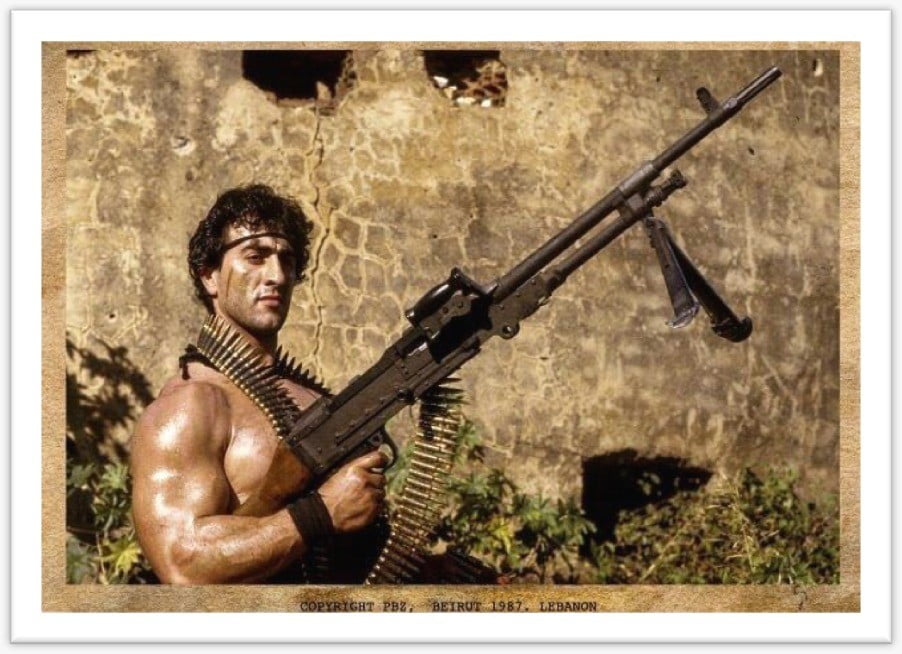
Most of the image is occupied by the machine gun. “Only people with muscles like he has can carry and fire such a thing. I know, I’ve been with marines in Afghanistan, in Iraq and they only give it to the tough guy. To the muscle man.”
Rambo does not stand alone as the hard body of the Reagan era Missak Donanian, as the Lebanese Rambo, does as well, within a different war context. From his posture to the way he enunciates in the manner of Stallone, he is playing a character.
Through a very calculated set of premeditations, he has perfectly replicated Stallone’s whole essence, specifically his portrayal of Rambo. “[The Lebanese Rambo] had this funny approach: ‘Rambo fights in the films, I, on the other hand, am real.’ ” (Photo 4)
The Lebanese Rambo –a major finding, seems a proposed assemblage. Donanian wants to be perceived as a “tough guy” in every sense of the word and the public, embodied by the interviewer and cameraman, is more than willing to comply with those wishes.
It’s a vicious cycle of codependency between spectator and spectacle bred by garish iconography taken sincerely. Same goes for Cobra. He does not look human. He looks like a Zombie. An almost-fictional character whose abilities (in this case criminal) extend beyond normal human limitation by what looks like almost-mechanical elements built into his body.
He is brain-washed and manipulated to follow strict command. His head round and his eye piece diffuses further his locked eyes. The entire image is a copy of a copy. The image of a war/film junkie who loved to show off.
If Post-Vietnam American war films (1975-1985) had a huge impact on perpetrators of war (and consequently led to iconic representations of war within the context of the Lebanese Civil War).
Underpinned aspects of their daily routines, appearance and violent practices must have had a massive impact on the Lebanese Civil War as a whole, with transformative effects: Post-Vietnam American war films, among other timely factors, led to the Hollywoodization of the Lebanese Civil War, which turned out to be its possible sequel with transformative effects.
Both war and perpetrators of war will continue to transmogrify via media platforms and traditional warfare will continue to transmute into new forms.
Talal Chami’s e-book War-Film Junkies can be downloaded here. He has a very interesting blog called The Axles Of My Wagon Wheels. Very interesting and worth a visit indeed.

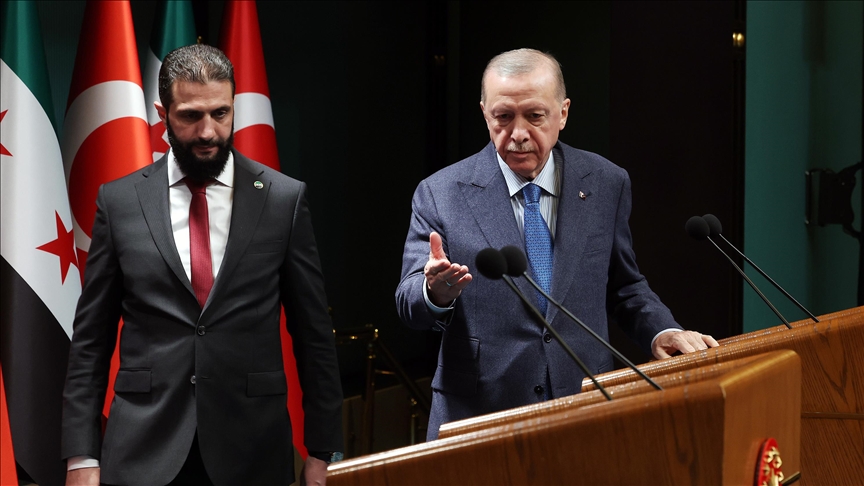




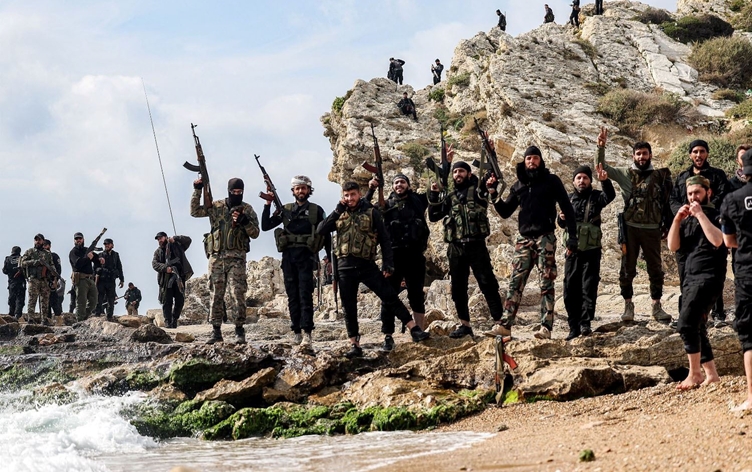
Thank you! No words ................
Interesting story by Arthur Blok. Would like to read that book by Chami. Great work Levant..
Thank you Majed! for your interest ... Much appreciated! I am sending the relevant link:
https://e-poetssociety.com/book/2289/war_film_junkies?fbclid=IwAR27PLQqxZ0Js9xzNe-n0f4fle811vET5srSw0v8goATnVvrcBYc0Z2NGqo